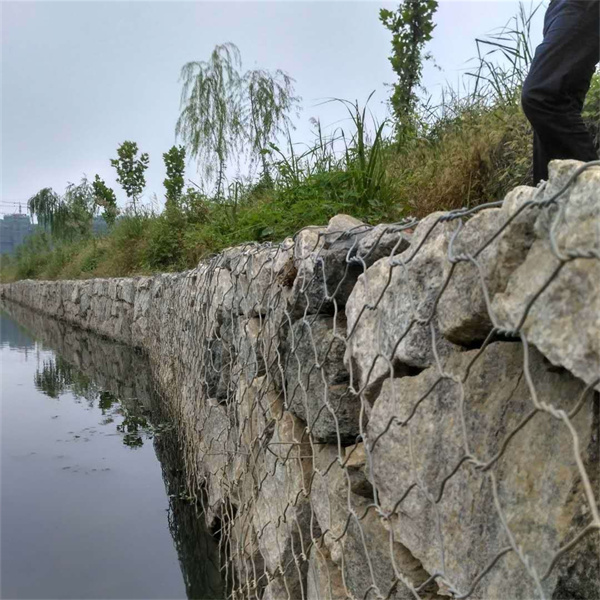nóv . 25, 2024 01:11 Back to list
Exploring the Benefits and Design of Gabion Retaining Structures for Modern Landscaping
The Function and Design of Gabion Walls
Gabion walls are an innovative approach to landscaping and erosion control, blending functionality with aesthetics. Essentially, a gabion is a wire mesh or wire basket that is filled with stones, rocks, or other materials to create a sturdy structure. These walls have gained popularity in recent years, primarily due to their versatility, cost-effectiveness, and eco-friendliness. In this article, we will explore the design, applications, and benefits of gabion walls.
Design and Structure
Gabion walls are typically designed in various shapes and sizes, accommodating different weights and loads. The basic structure consists of a wire mesh made from galvanized steel or PVC-coated steel, which is assembled into boxes or cages. Once the cages are secured in place, they are filled with suitable inert materials like granite, limestone, or recycled materials. This filling process not only enhances the aesthetic value of the wall but also contributes to its stability, making it an increasingly popular choice for engineering projects.
In terms of height and length, gabion walls can vary widely. They can be constructed as low retaining walls for landscaping or as tall structures for heavy erosion control. These walls can be designed to follow the natural contours of the land, providing a level of flexibility that is often lacking in traditional retaining walls.
Applications of Gabion Walls
Gabion walls find applications in various settings, including residential landscapes, commercial properties, and civil engineering projects. One of the most common uses for gabions is as retaining walls to combat soil erosion. Their open structure allows rainwater to flow through without causing pressure build-up, reducing the risk of hydraulic pressure associated with traditional solid walls. This is particularly useful in hilly or unstable terrain where soil erosion is a major concern.
Furthermore, gabion walls can be utilized for noise barriers alongside highways or industrial areas. When filled with large stones or rocks, they can effectively absorb sound, providing a more pleasant environment for nearby residents. Additionally, gabion structures can be employed in riverbank stabilization, effectively protecting the banks from erosion caused by flowing water.
gabion walls

Environmental Benefits
One of the standout features of gabion walls is their environmental impact. The use of natural materials minimizes the carbon footprint associated with their construction. Many projects opt for locally sourced stones or recycled materials such as concrete or broken bricks to fill the gabions, which further supports sustainable practices. Additionally, the porous nature of gabion walls allows for better drainage and reduction of runoff, which is crucial in managing stormwater in urban landscapes.
Moreover, gabion walls can contribute positively to ecological habitats. The spaces between the rocks can serve as shelters for small wildlife, promoting biodiversity. Over time, vegetation can also establish itself in the cracks and crevices of the wall, adding to the site's aesthetics and providing further stabilization to the wall system.
Construction Considerations
When planning the construction of gabion walls, several factors need to be taken into account. The site’s soil type, slope, and hydrology are all crucial in determining the design and placement of the walls. Proper engineering design is essential to ensure that the walls can bear the loads they will encounter. Additionally, while gabion walls do require some initial investment, their long-term durability often makes them more cost-effective compared to traditional methods.
Conclusion
In conclusion, gabion walls represent a harmonious blend of practicality and environmental consciousness. Their versatile applications in erosion control, landscaping, and noise reduction, combined with their sustainable characteristics, make them an attractive choice for modern construction projects. As society becomes more aware of ecological impacts and the importance of sustainable practices, gabion walls are expected to play an increasingly pivotal role in shaping both our landscapes and our approach to environmental challenges.
-
hesco-gabion-baskets-for-coastal-erosion-prevention
NewsAug.22,2025
-
longevity-and-durability-of-river-rock-gabion-walls
NewsAug.22,2025
-
how-to-integrate-gabion-3d-walls-in-urban-planning
NewsAug.22,2025
-
reno-mattress-gabion-applications-in-civil-engineering
NewsAug.22,2025
-
how-to-install-wire-mesh-for-gabion-baskets-properly
NewsAug.22,2025
-
best-materials-for-filling-a-chain-link-gabion
NewsAug.22,2025
-
Wire Mesh Thickness Impact on Gabion Wall Load Bearing
NewsAug.12,2025






